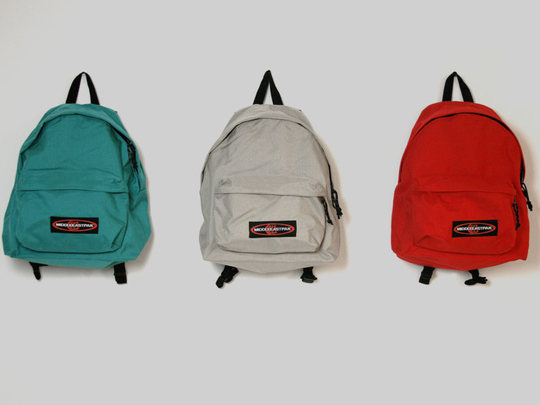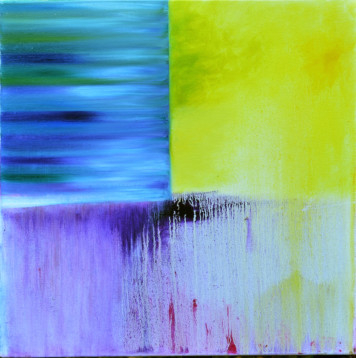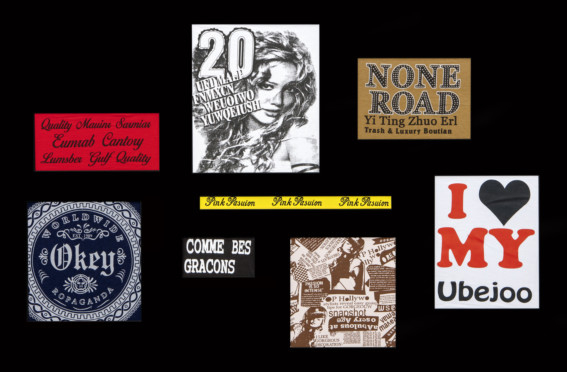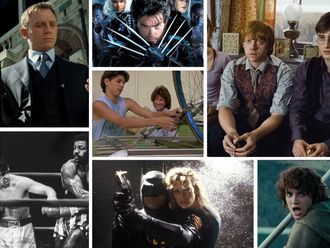
Gharbzadegi is a pejorative Persian term that can be translated as “West-struckness”. Jalal Al-e-Ahmad used it in his 1962 book “Gharbzadegi: A Plague from the West” to describe the loss of Iranian cultural identity through the adoption and imitation of Western models in politics, education, arts and culture.
Anahita Razmi looks at this concept from a new perspective in her latest show “Sharghzadegi”. The Berlin-based artist, who is of Iranian origin but was born and raised in the West, formulated this term to describe East-struckness. She looks at the idea of Sharghzadegi and Gharbzadegi from a point of view that shifts historical and contemporary connotations of these concepts, and questions how East, Middle and West are defined.
Through artworks that include photography, audio and video art, and appropriations of iconic artworks and objects, she explores stereotypical ideas of Oriental and Occidental, and the linguistics of desire and power, and empowerment.
“Gharbzadegi has become a common term in political discourse in Iran, especially after the Iranian Revolution. Sharghzadegi is a logical counterpart. I want to ask what Gharbzadegi could mean in a contemporary sense, and what a possibly contradicting counterpart could mean. I grew up in the West, but my father is Iranian, I have an Iranian name and usually work with Iranian themes. As someone who exists between two cultures, which is quite common today, I am interested in the vagueness of terms such as Gharbzadegi and Sharghzadegi, and how these are redefined by location, context and language.
“What is East in Iran is quite different from the idea of East in Germany; and my being ‘East-struck’ would also mean different things in both places. Yet we have these stereotypes of oriental and occidental. The idea of this show is not to see these terms as opposites, but to shift perspectives and explore their altered meaning and implication,” Razmi says.
A simple illustration of these ideas is a photograph of her hand bearing a tattoo that says “This is not Iranian”, written in Farsi. By putting this stamp on her body, Razmi raises questions about her own identity, about the idea of East and West, and notions of East- and West-struckness. She asks the same questions in an audio comprising “Aaaah” sounds taken from various Western music tracks, conversations and Islamic prayers.
Razmi often appropriates well-known works of art and iconic objects from contemporary life, giving them a twist to convey a different message. For instance, she has added the word “Middle” to the logo of a well-known American brand of backpacks, to create her own edition of “Middle East Pak” backpacks.
“This simple alteration in the ‘East Pak’ brand name suddenly makes the product politically charged. Even the original brand’s advertising slogans ‘Built to Resist’ and ‘Made in USA’ seem to have different connotations in the present geopolitical context. This work is about branding and labelling things, and also about questioning how labelling something changes our perceptions of it,” Razmi says.
She has similarly transformed a well-known 1969 conversation between American artists Nancy Holt and Robert Smithson, where they spoke in the stereotypical way expected of an artist from the East coast and the West coast of America respectively.
In Razmi’s version, titled “Middle East Coast West Coast”, references to location are bleeped from the conversation and the identities of the man and woman in the video are hidden behind black veils that look like chadors, thus changing the perception of a conversation about American stereotypes to an Islamic and Middle Eastern context.
In another appropriation of Chris Burden’s 1970’s work “Chris Burden Promo”, Razmi promotes herself and her “Iranianness” on US and Middle East based channels illegally broadcast in Iran.
In “New Silk Road Patterns” she presents a variety of fabrics and garments, sourced from bazaars in Iran. These are cheap Chinese imitations of well-known Western brands, produced for the Iranian market, where Western goods are not available due to sanctions. The garments are replete with references to Western brands and pop icons as well as spelling mistakes, grammatical errors and Iranian references that change the original meaning of the slogans printed on them.
“This work refers to a different East, which is East of Iran, and explores the pattern of trade and cultural exchange today in reference to the Silk Road, which once linked the Far East with the Middle East and the West. The clothes represent trade links between China and Iran; but the statements printed on them reveal layers of West and East-struckness. These products are deconstructions of Western symbols, icons, brands, letters, quality, personal statements and lifestyle that have been reassembled somewhere in the East and sold to another East.
“And I continued the process by putting these ‘low culture’ products in a ‘high art’ context. Despite being copies, there is an authenticity to them because they are the result of a real need, and they are charged with various social, economic and political dimensions in a country where the Western originals are not available,” the artist says.
Jyoti Kalsi is an arts enthusiast based in Dubai.
“Sharghzadegi” will run at Carbon 12, Al Quoz until May 10.
Gathering Lights
Indian artist, poet and thinker George Rajappan’s first exhibition in Dubai, “Gathering Lights”, features two series of oil and pastel paintings on paper and a recent series of oil on canvas paintings. The abstract works have a sense of serenity and luminosity, drawing viewers deep into the carefully constructed layers of colours, tones, emotions and moods.
“Human beings have strived to move forward and to attain material, political and spiritual freedoms. But now it seems that we are at a crossroads, where the forces against freedom are taking over and the resistance to them is becoming weaker. For quite some time I have been feeling that the human race is moving backwards into darkness. As an artist I feel I have a responsibility to express hope and to show that there is still some light that remains, and we can all gather those lights and go forward and resist the forces that are annihilating not just us but also themselves. I believe in the idea of ‘collective unconscious’ that connects us all, and makes it possible for us to communicate through art,” Rajappan says.
“Gathering Lights” will run at Alliance Francaise, Oud Mehta Road, Dubai until April 30.














